
“The best investment is in the tools of one’s own trade.” ~Benjamin Franklin
It recently occurred to me that since I’ve posted quite a bit about knife skills and maintenance, paired with a few reviews, but there’s nothing on my site about knife styles or knife blade profiles.
Considering that any knife’s blade profile is one of the most important indicators of its fitness for a given application, it behooves me to shed some light on the matter.
So, with that said, here’s a breakdown of some of the more common knife blade profiles out there. There are others, but the ones you’ll encounter here will account for the vast bulk of the market.
Drop Point
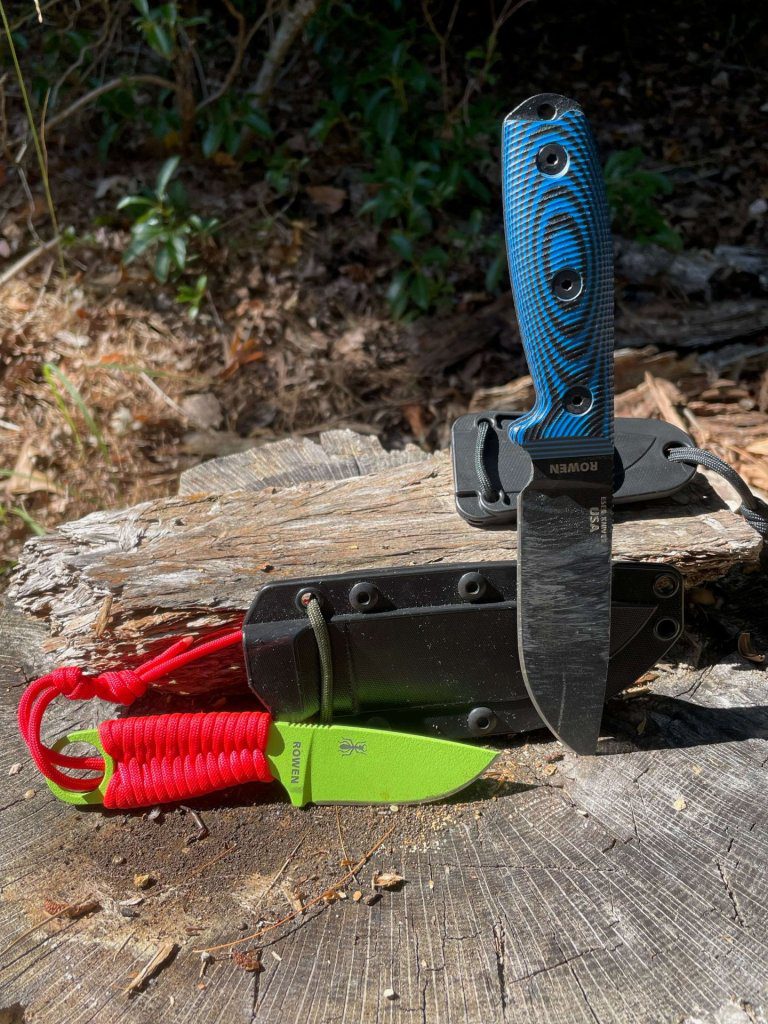
A basic drop point, in which the spine of the knife gracefully slopes down to meet the edge at a “dropped” point (hence the name) is far and away the most common knife blade proflle in the industry. Most fixed and folding blades are made with some species of drop point.
The reason for this is a product mostly of function rather than fashion. Granted, the drop point is one of the least aesthetically moving profiles out there, but it is easily one of the most practical and one of the most versatile as well.
The drop point is easy to forge and manufacture, and doesn’t require any special grinds or techniques on behalf of the manufacturer. Moreover, a drop point is well-suited to almost anything you could use a knife for, barring the most specialized tasks.
Also, the drop point results in considerable integrity near the tip of the blade, which is an area in which other profiles (like needle points and clip points) are notoriously weak. There are stronger blade profiles, but the tip of a drop point is unlikely to chip or snap during routine use unless you strain the knife.
All in all, knives with drop points have good cutting capacities and depending on the fineness of the point, retain decent piercing abilities, too.
I’ll put it bluntly (no pun intended here) – if I had to forfeit using all other knife blade profiles for the rest of my life save one, I’d carry a drop point. And, since I often do, I don’t consider that a hyperbole.
Straight Back
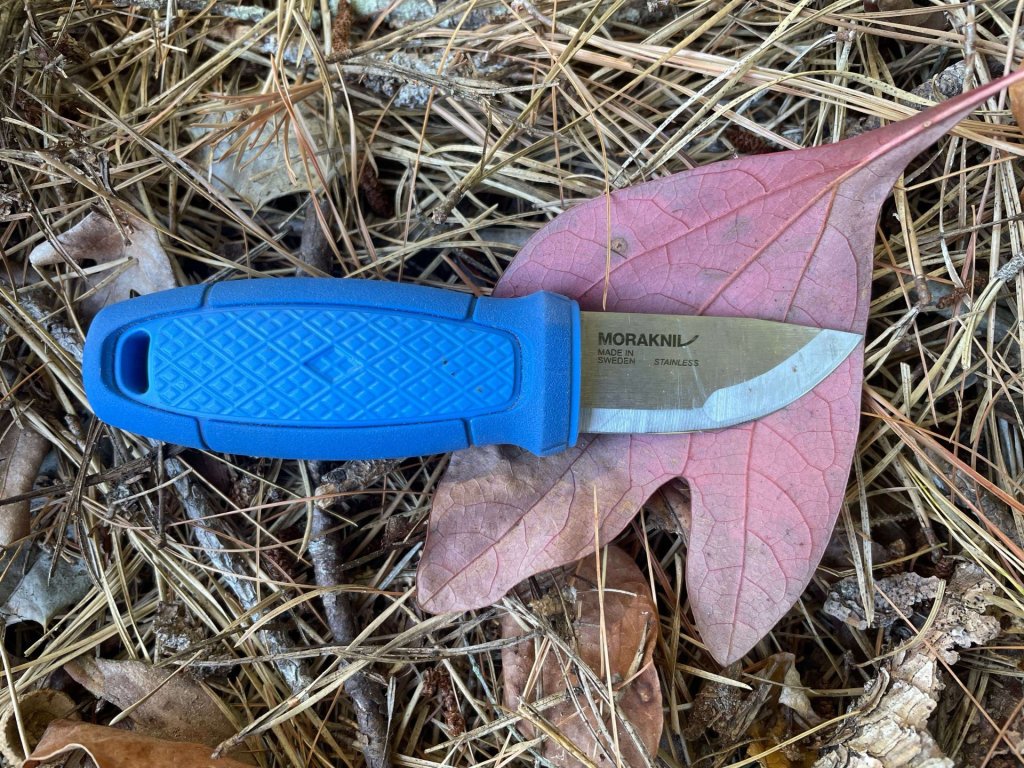
The straight back is very similar in blade profile to the drop point, except the spine does not stoop down to meet the point. Rather, the spine is completely straight – hence the name.
Puukko style knives, like Mora Knives and Martiini Knives, generally have straight back designed, though there are others that do as well. The Mora Eldris I reviewed some time back has a straight back design, as do my other Mora Knives.
There’s not much for me to say here that I didn’t already cover with the drop point so I wont belabor the issue. Generally speaking, there isn’t much functional difference between the two knife blade profiles. As a general rule, what a drop point can do a straight back can do with equal facility.
Clip Point
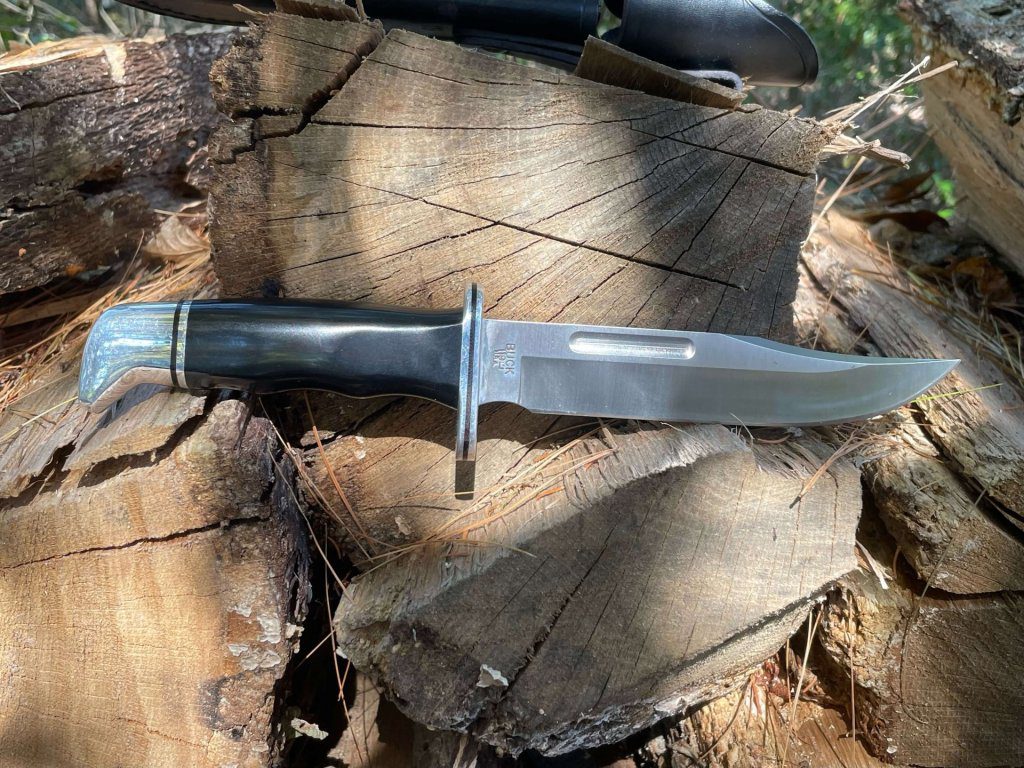
In the clip point configuration, illustrated by the venerable Buck 119 pictured above, there is a portion of the spine that has been removed or ground away (that is, “clipped”) generally resulting in a swedge in front of the point.
As a result, a clipped point is usually very fine. This results in a very sharp point with no sacrifice in cutting power. It also means that clip point blades are better at piercing than both drop point and straight back blades.
This is a very popular knife blade profile no doubt because it is so versatile for piercing and cutting but also because it looks cool. Many hunting knives sport clip points, as does the classic “bowie” profile.
For my part, I like the look of a clip point but I generally don’t carry them simply because I tend to be hard on my knives and this clashes with the main weakness of this knife blade profile: the fineness of the point, though it confers an advantage with respect to piercing, also results in a weak tip that is prone to snapping when stressed.
Recurve (Example: Parang)
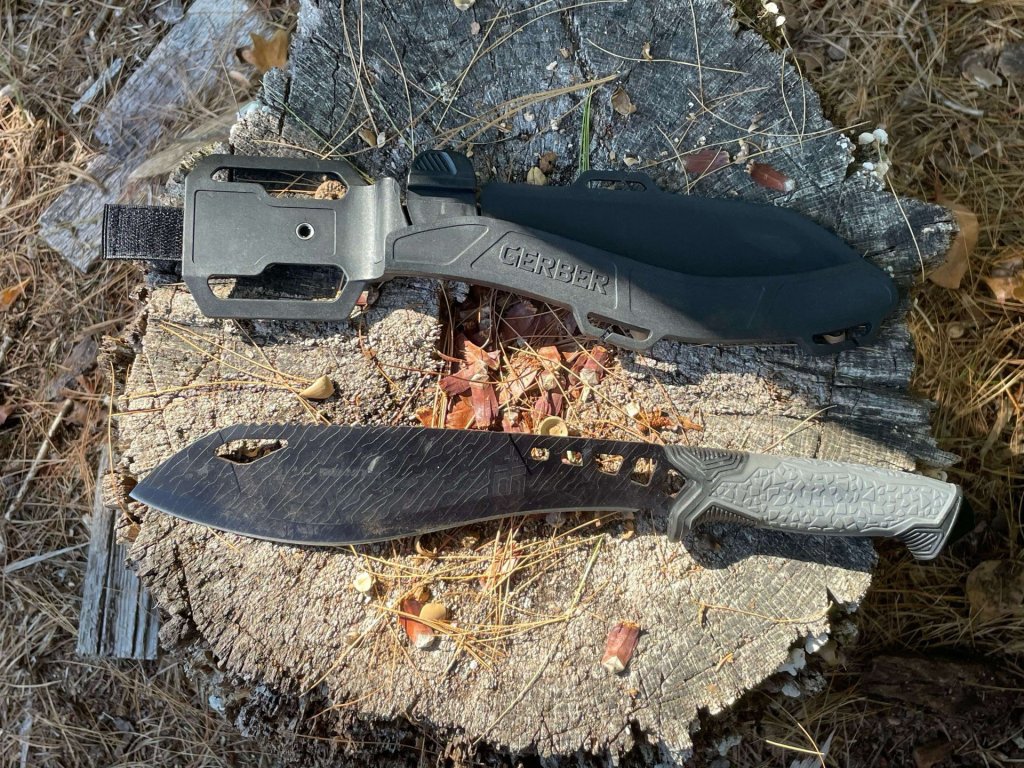
Strictly speaking, a recurve itself is a feature of a knife blade profile rather than the profile itself. For instance, a parang (pictured above in the likeness of a Gerber Versafix) is a knife blade profile that sports a recurve as a part of the design. With that said, because of their uniqueness and the value they offer, I will cover them here as though they are actually a profile, proper.
When a blade has a recurve, that means that a part of the edge curves forward, toward the point, and then away from it. That is, there are two curves to the edge – an inward one and an outward one.
Naturally, this results in a blade that almost always has more mass near the point, which means the balance of the knife is towards the end of the blade. You know what that means – these are natural born choppers.
And that they are. My Versafix is a great tool to use out back when processing firewood, or just dicing up some hardwood from the stack for smoking on the grill. Besides a cleaver, or a machete (on that note, an entire article could be written on machete blade profiles too), there is no better knife blade profile for chopping than one that has a recurve.
Now, there is one thing I do not like about blades that sport a recurved edge and it is this: sharpening the inwardly curved portion is a bear. In fact, I hate it. Because it is curved inward, you cannot use a flat stone and need to use some sort of sharpening rod. And I do have sharpening rods but I’m loath to use them.
So, the result is that I usually just keep them for rough work and only the chopping edges of my few recurved blades are in serviceable order. Just something to note.
Spear Point

If you’re looking at a spear point and don’t know where the edge is, it’s impossible to tell which side is sharpened. That’s how you know you’re looking at a spear point – it’s symmetrical near the tip, like the stereotypical spear from which it takes its name.
In a spear point, both the edge and the spine slope to meet each other. In some instances, both edges are sharpened, in which case it might be referred to as a dagger point rather than a spear point. Realistically they are one and the same, it’s just a matter of whether one or both edges are sharpened.
The benefits of a spear point are pretty much in league with a drop point. They have stout points and usually a lot of belly, which makes them great options for both piercing and slicing. Because they are so generalized, knives with spear point profiles are generally popular with bushcrafters, too.
I can’t say much on the matter one way or the other. It is true that spear point blades are usually pretty plain, but they are workhorses and that’s what they are designed to be, so how can we complain?
Needle Point
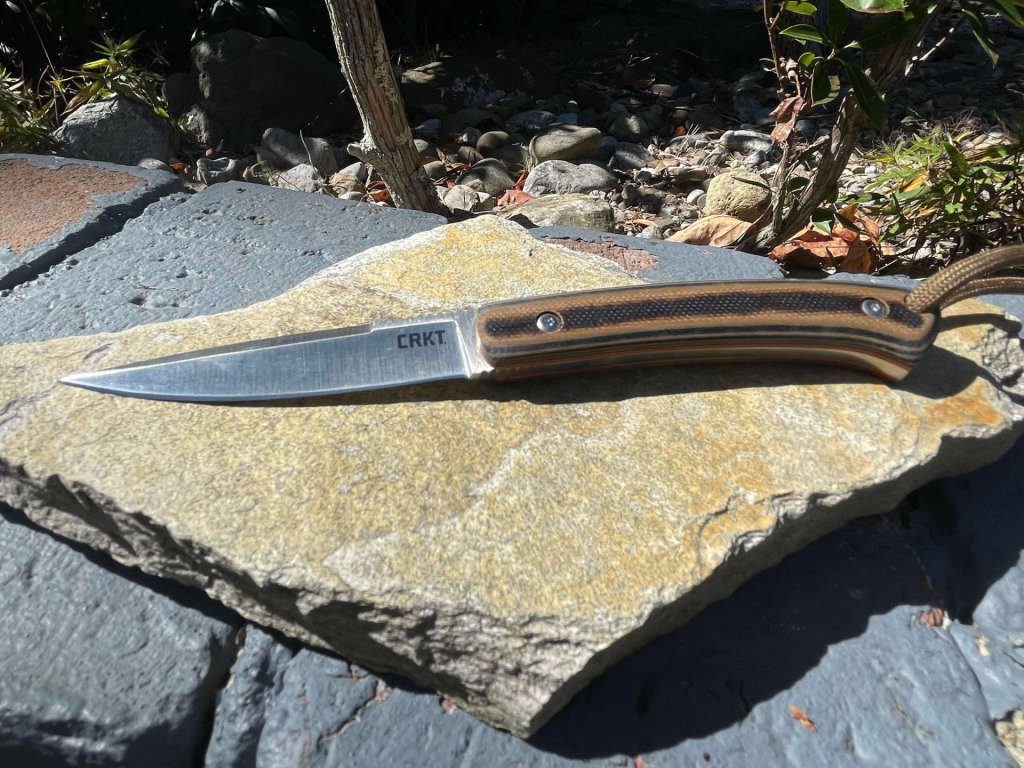
A needle point is effectively a very fine spear point. That is, the blade is bilaterally symmetrical along an axis from shoulder to point and both the spine and edge come together to make a very, very fine point.
Needle points are honestly good for one thing and one thing only: piercing. This makes the profile suitable for some fighting knives that are expressly designed for thrusting. I have read that the rondels and stilettos of the Middle Ages were so designed to slip through the narrow rings of mail, thus splitting them and granting the bearer a greater hazard at victory over a mail-clad opponent. If that is true, my observation stands.
Anyway, what the needle point gains in piercing ability it loses in pretty much everything else. They are thin and generally fragile with what I would call inexcusably fragile points. Therefore I have little sporting use for them.
Harpoon Point

I’m only including this profile here because I once reviewed the Schrade Divergent and it technically has a knife blade profile that might properly be called a harpoon point.
The harpoon point is like the opposite of a clip point knife blade profile. In it, instead of clipping away some of the blade stock from the spine near the point, the spine raises away from the point, resulting in a thumb scoop behind and a sort of barb before.
I can genuinely think of no specific advantage to this knife blade profile other than aesthetics. They certainly look cool, and they lack the fragile point of a clip point configuration. I guess we might say they’re like clip points without the fragile tip.
Talon (AKA Karambit)
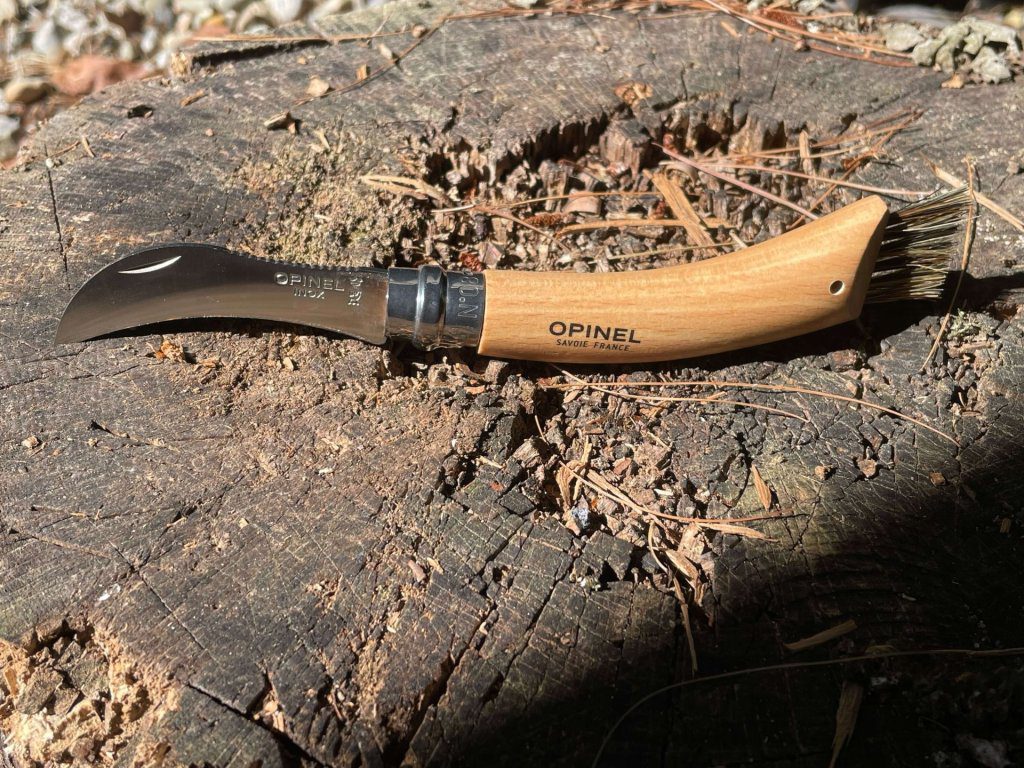
Talon style blades are sometimes referred to as Karambits, although that is a specific style of knife and not necessarily a knife blade profile.
Anyway, in the talon configuration, the spine curves downward to a point that lies below the handle. The edge is curved inward, and down towards the point.
This configuration is one of the best there is for making draw cuts. As a result, pruning knives and linoleum knives sport talon profiles. So does my Opinel Mushroom Knife, pictured above.
That is the advantage – now for the (what I would call) glaring disadvantage. For the same reasons as a recurve, a flat sharpening stone cannot be used with a blade that has a talon profile.
This means a rod must be used for the purposes of sharpening one, which I find highly inconvenient. As a result, few of my knives have talon profiles. They do have a time and a place, though.
Sheepsfoot/Reverse Tanto
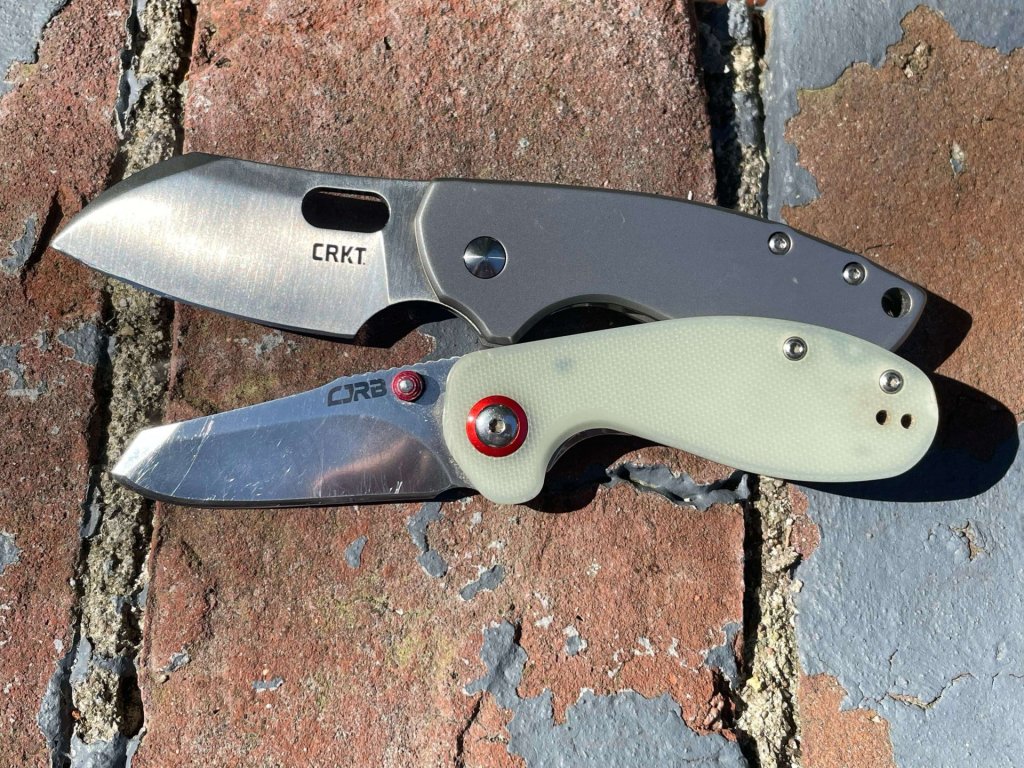
In a sheepsfoot style blade, the spine starts out like a straight back, then slopes down to meet the edge. The edge can either be straight, or it may have a slight belly.
Even though I hotly extolled the virtues of drop points above, they’re really neck and neck in my estimation with sheepsfoot blades. I truly have come to love a sheepsfoot for so many different reasons.
In my experience (and I carried a CJRB Maileah daily for almost three years) the sheepsfoot can do everything a drop point can do, just as well as a drop point, but there’s less risk of damage to the tip. That’s huge. As I stated, I can be pretty rough on my tools and the extra strength at the tip of the blade is big for me.
Just look at how much use I put through my one Maileah. You can see how far sharpened down the blade is.
Anyway, sheepsfoot style blades generally are made of tougher stock than other knives, too, and tend to have thick spines. That’s worth something to me. They’re not as good at piercing as clip point and needle point knives, or even most drop points, but in nearly all other areas, they perform as well if not better.
The one drawback of a sheepsfoot knife is that they are not designed well for piercing tasks – so if you need a knife for that, look for a different profile.
Tanto
The tanto style blade is similar to a straight back, except the belly is usually not curved at the tip; rather, there are two grinds, one for the belly and another angled off of the belly, producing the tanto point configuration.
There is really one main advantage to the tanto point, and only one. It results in a really strong point that’s designed for thrusting. Other than that, they are about as good at cutting and piercing as any other straight back or drop point knife.
They are very popular right now, probably for two main reasons: the one I mentioned (the tip is really strong) and they are also very “tacticool.”
I don’t have a really good example of a tanto point blade in my collection, so for reference, take a look at Cold Steel’s G.I. Tanto. I’m not endorsing that thing in any way, I just happen to know that Cold Steel makes a lot of tanto-style blades.
Wharncliffe
A wharncliffe, sometimes affectionately referred to as a “wharnie” is a sheepsfoot that has a very fine point. Rather than the spine sloping down gracefully to meet the edge, it’s more like a needle point, except it’s not symmetrical. Think of a wharnie like a sheepsfoot that’s designed for thrusting.
Generally speaking, wharnies have slightly stronger tips than needle points, but not by much. Usually, they have long, straight edges that are decent for cutting, but again, these are designed for piercing.
I also don’t have any good examples of wharnies in my collection (again, I prefer a sheepsfoot), so for reference, check out the Kershaw Leek – that’s a good, popular example of a Wharncliffe style blade.
Cleaver
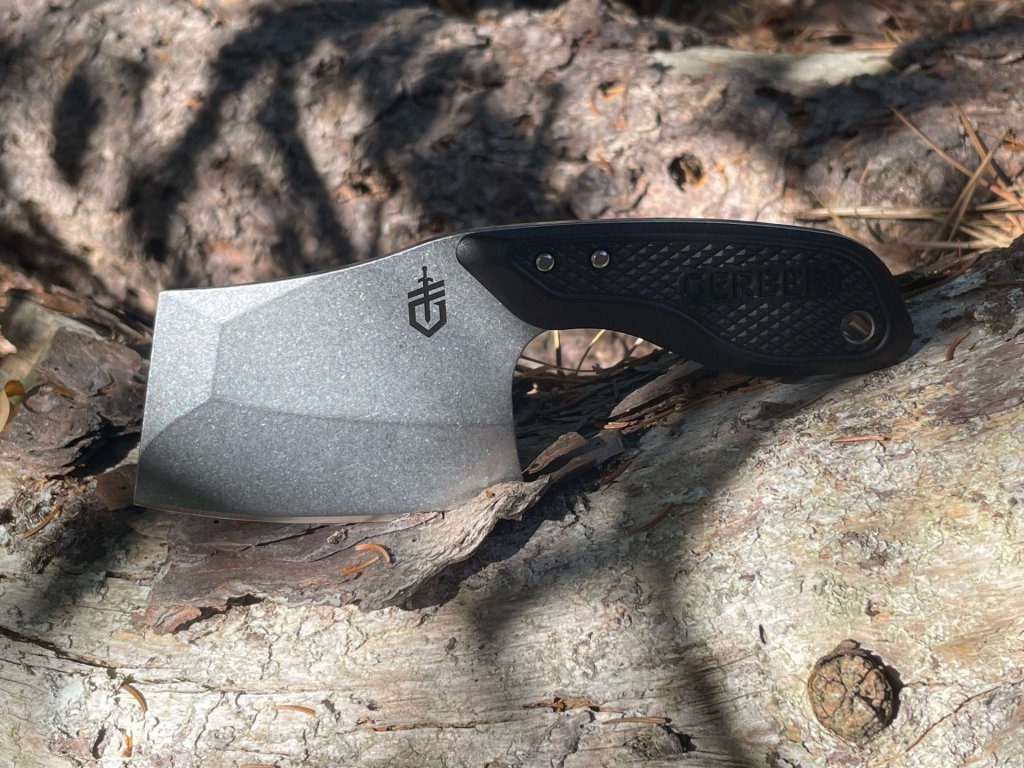
Cleavers are typified by thick blade stock, a straight or curved edge, and generally (except in the case of Serbian-style cleavers) not discernible point.
You probably do not need me to tell you that cleavers are designed for chopping, and pretty much incapable of piercing. Even with that said, they are not only good for chopping. They are also good for slicing, great for food prep (you can use a small camp cleaner as a cheese knife or a condiment spreader quite effectively), and they are also great for making chisel-style cuts. For instance, you can notch a stick or shave tinder quite effectively using a cleaver, if you have a steady hand.
Trailing Point
In a trailing point knife, the point sits higher than the handle, and both the belly and the spine sweep away from it to meet it. A trailing point is basically like a smaller version of a shamshir (scimitar).
Trailing points don’t usually balance that well, and they can be a little unwieldy because, say what you want, the point does not index well. However, there are two things trailing point knives usually are good for: long, sweeping cuts and piercing tasks.
So, if you need a knife for those two things, one with a trailing point profile will be hard to beat.
This is another profile to which my collection has no good witness. The CRKT Ritual is a good example.
Skinner/(Ness)Muk

Most skinner knives have a generally leaf-shaped profile, in which the knife blade becomes wider as it gets away from the handle. One special configuration is the Nessmuk, a special type of skinner named after famous woodsman “Nessmuk,” or George Washington Sears.
The skinner’s profile has a somewhat obtuse tip which is not very good for piercing. This is a good thing since skinners are (obviously) designed for skinning. That requires long, sweeping cuts (at which the skinner excels), with a mitigated risk of piercing whatever is inside (the entrails of the quarry).
And so, skinners are good for slicing and sweeping cuts, but not too much else.
I don’t have many true skinners; I’d just use a drop point with plenty of belly if the occasion called for it. Nonetheless, my Cold Steel Canadian Belt Knife, pictured above, is a pretty good representation of this type of knife blade profile. (By the way, one might also call this specific blade profile a leaf shape.)
Knife Blade Profiles: Wrapping Up
That about wraps up the major classes of knife blade profiles. As I stated, there are others, but if you just pull up a random knife listing on the internet or sweep through my reviews, chances are high you’ll be able to drop what you find into one of the buckets I have selected.
Anyway, you’ve heard my preferences and read my estimation of these major types of knife blade profiles. What did I miss, what’s your preferred profile, and why? Let me know in the comments.
Stay sharp.
~The Eclectic Outfitter